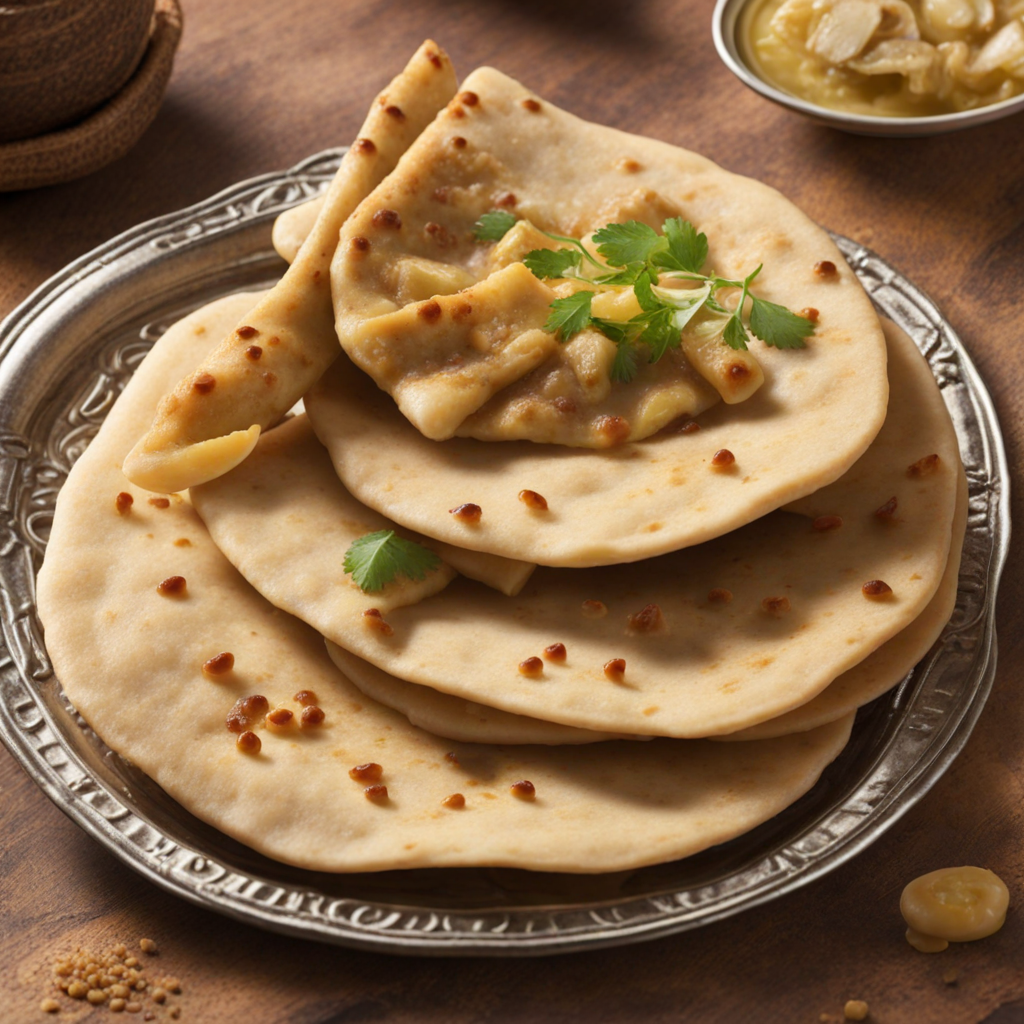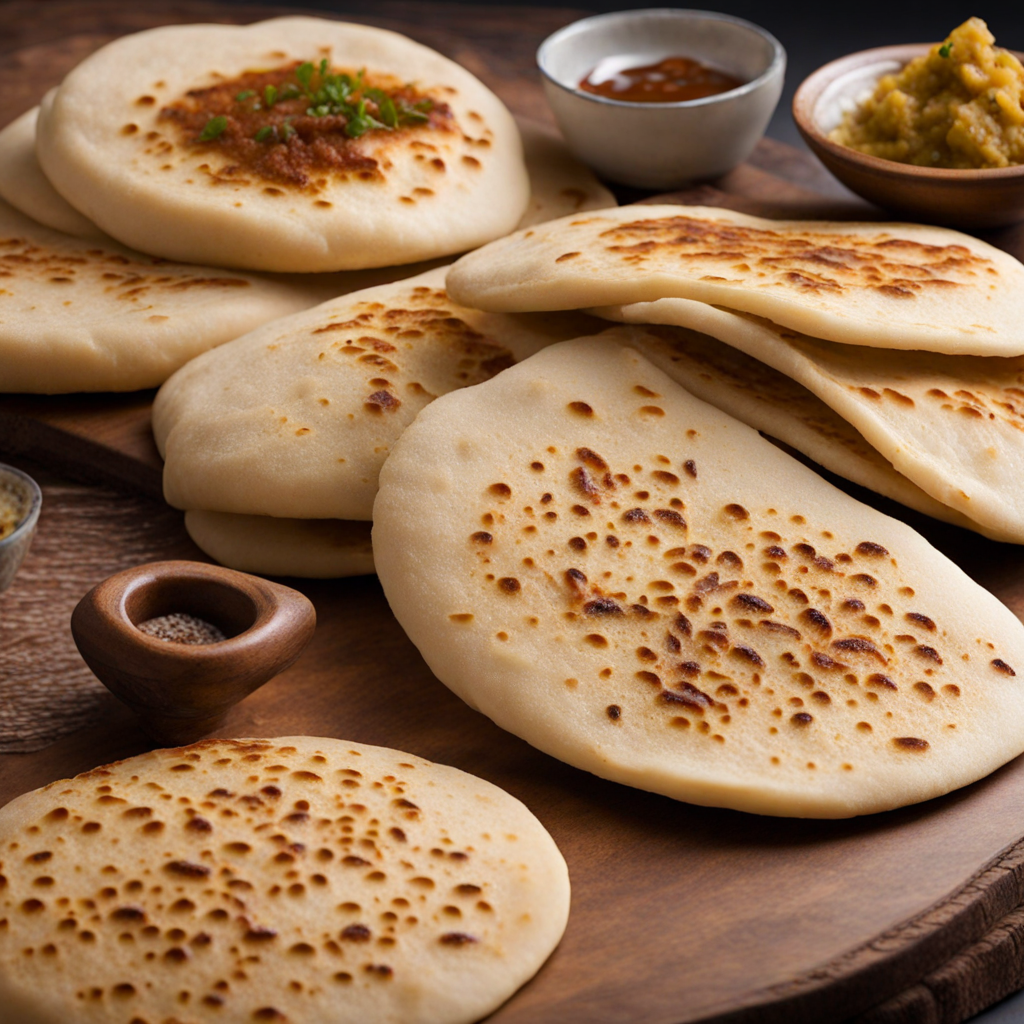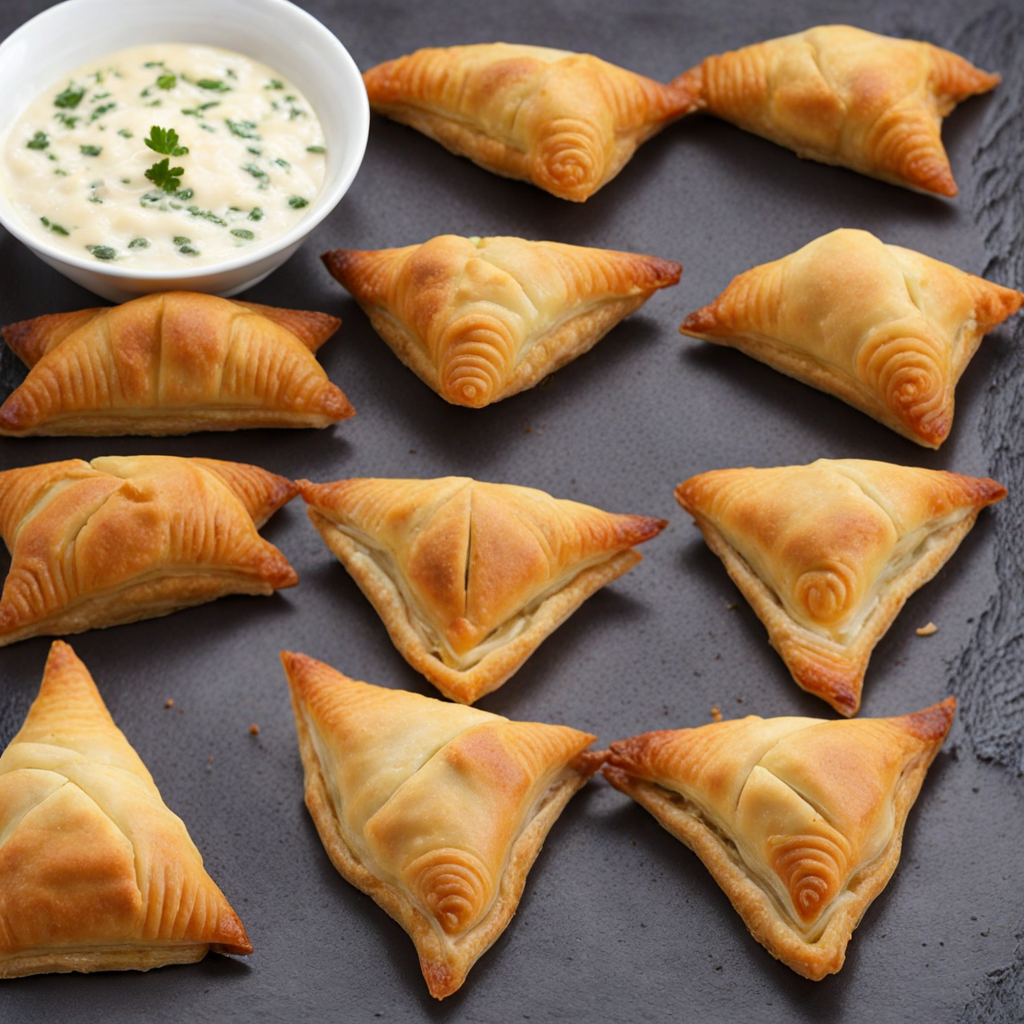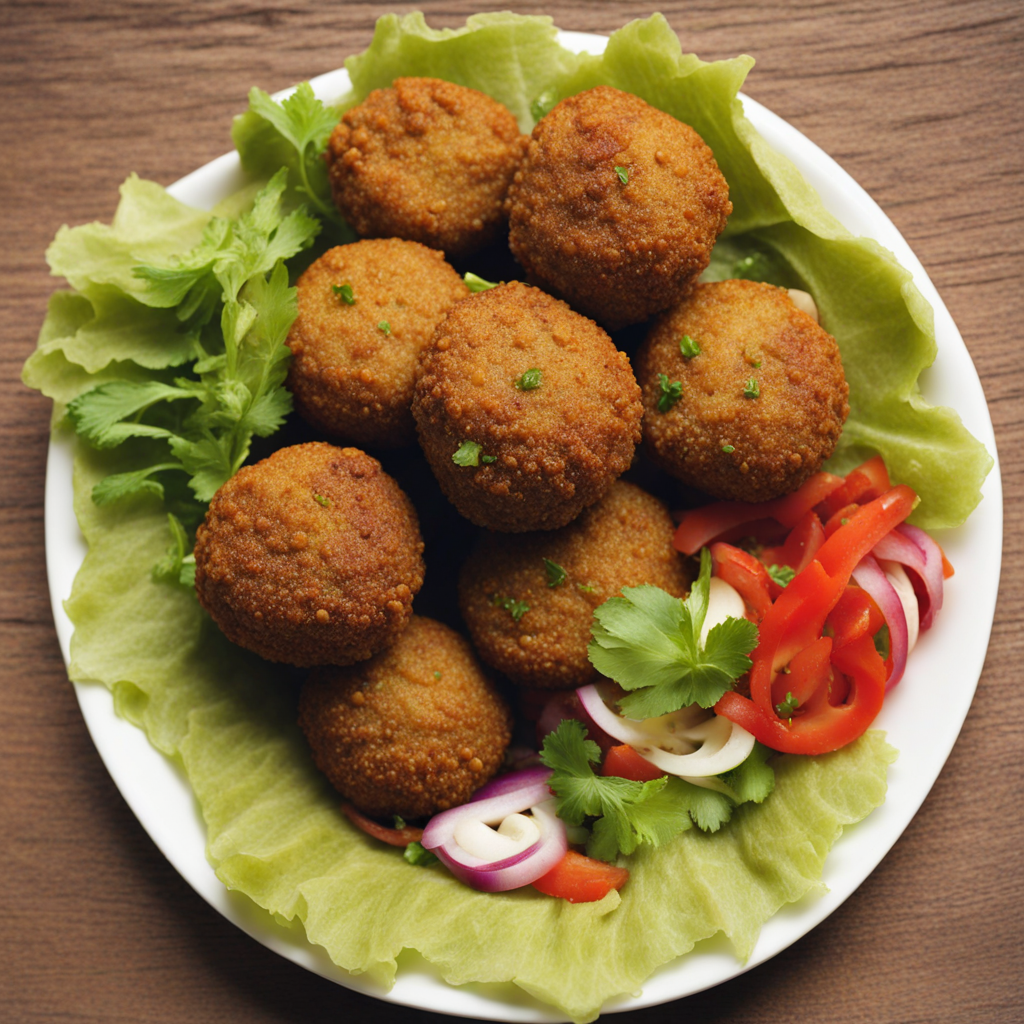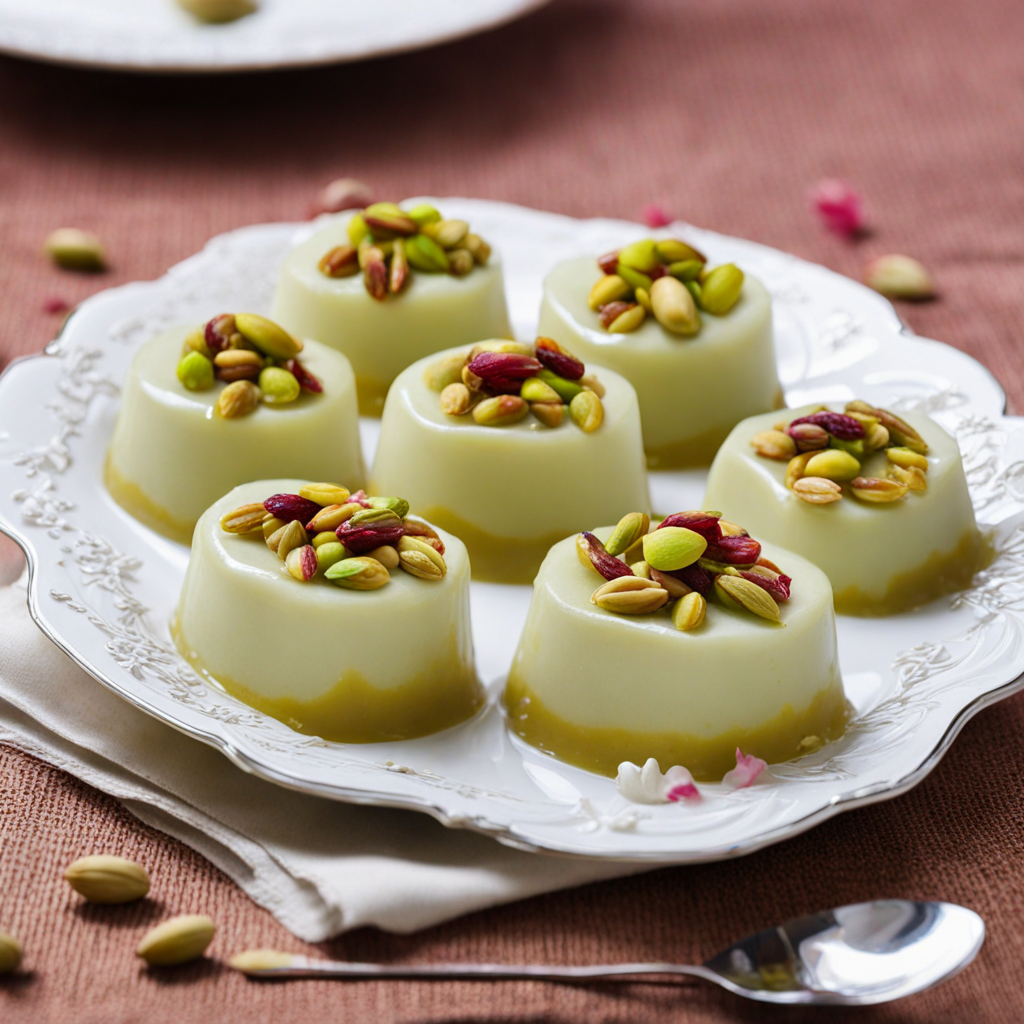Khameer
Khameer is a traditional Emirati bread that offers a delightful taste of the Middle East, characterized by its soft, fluffy texture and slightly sweet flavor. Made from a simple combination of flour, yeast, water, and a hint of sugar, Khameer has a unique ability to rise beautifully during the baking process, resulting in a light and airy bread. Its golden-brown crust contrasts with the tender, pillowy interior, making it an inviting option for any meal. Often enjoyed fresh out of the oven, this bread is both versatile and comforting, perfect for accompanying a variety of dishes or simply enjoyed on its own. One of the most appealing aspects of Khameer is its adaptability. It can be served with a myriad of dips and spreads, such as hummus, labneh, or date syrup, enhancing the taste experience with each bite. In Emirati culture, Khameer is often paired with savory dishes like stews or grilled meats, providing a delightful balance of flavors. The bread can also be used to scoop up rich sauces, making it a staple in communal meals where sharing is a cherished tradition. In addition to its delicious taste, Khameer is a reflection of the UAE's rich culinary heritage. The preparation of this bread often involves time-honored techniques passed down through generations, showcasing the importance of family and community in Emirati cooking. Whether enjoyed during festive occasions or as a simple everyday staple, Khameer embodies the warmth and hospitality of the region, inviting newcomers to savor the flavors of the United Arab Emirates.
How It Became This Dish
The History of خمير (Khameer) in the United Arab Emirates Khameer, a traditional bread from the United Arab Emirates, represents more than just a staple food; it embodies the rich tapestry of Emirati culture, history, and culinary evolution. As we explore its origins, cultural significance, and development over time, we uncover a story that is deeply intertwined with the social and economic fabric of the region. #### Origins of Khameer Khameer, which translates to "ferment" or "leaven," is a type of leavened bread that has its roots in the Middle East, where bread has been a fundamental part of the diet for millennia. The use of fermentation in bread-making likely dates back to ancient civilizations, possibly as far back as Mesopotamia. The concept of using natural yeast from the environment to leaven dough is a practice that transcends cultures and has been adopted and adapted by various societies. In the context of the United Arab Emirates, Khameer is believed to have originated from the traditional Bedouin lifestyle, where food was often prepared using locally available ingredients. The Bedouins, known for their nomadic lifestyle, relied on simple but nutritious foods that could be easily transported and preserved. Wheat, due to its adaptability to the arid climate, became a primary grain. As they settled into more urbanized areas, the methods of preparing Khameer evolved while retaining its essential characteristics. #### Cultural Significance Khameer holds a significant place in Emirati culture and cuisine. It is often prepared during special occasions, such as weddings, Ramadan iftars, and family gatherings, symbolizing hospitality and community. For Emiratis, sharing food is a vital part of social interaction, and Khameer serves as a centerpiece in many meals, accompanied by a variety of dishes. Traditionally, Khameer was baked in a taboon, a clay oven that dates back thousands of years. The taboon is not only a cooking method but also a communal gathering spot where families and neighbors would come together. This method of baking gives Khameer its distinct smoky flavor and chewy texture, making it a cherished bread in Emirati households. Moreover, the bread is often enjoyed with a selection of traditional dips and spreads such as date syrup, honey, or cheeses, enhancing its role in the Emirati culinary experience. The act of breaking bread together is a symbolic gesture of unity and friendship, reinforcing social bonds within families and communities. #### Development Over Time As the UAE underwent significant transformation throughout the 20th century, particularly with the discovery of oil and subsequent modernization, the preparation and consumption of Khameer also evolved. With urbanization, more people moved to cities like Abu Dhabi and Dubai, leading to changes in food preparation methods and the availability of ingredients. In the past, Khameer was primarily made at home using traditional methods. Families would grind wheat, mix it with water, salt, and natural yeast, and allow the dough to rise before shaping and baking it. This artisanal approach to bread-making fostered a deep connection to the land and traditions. However, as commercial bakeries began to emerge, the accessibility of Khameer increased, and the recipe saw slight modifications. While traditional methods are still cherished, pre-packaged dough and mixes became available, allowing for quicker and easier preparation. This shift made Khameer a more accessible option for busy families, particularly in urban areas where work-life balance often leaves little time for traditional cooking. Despite these changes, many Emiratis remain committed to preserving the traditional methods of Khameer-making. Numerous cooking classes and culinary workshops are held to educate younger generations about the heritage of Emirati cuisine, ensuring that the art of making Khameer is passed down through families. These efforts also reflect a growing interest in sustainable and local food practices, as many are returning to traditional methods of bread-making that emphasize quality ingredients and time-honored techniques. #### Contemporary Khameer In recent years, Khameer has experienced a renaissance as part of the broader movement to celebrate and preserve Emirati heritage. Chefs and culinary enthusiasts are reimagining traditional dishes, incorporating Khameer into modern menus, and experimenting with flavors and presentations. This has led to a fusion of traditional Emirati cuisine with contemporary culinary techniques, making Khameer a versatile component in both traditional and modern dining experiences. Restaurants across the UAE now feature Khameer as part of their offerings, serving it alongside contemporary dishes that reflect the nation’s diverse cultural influences. These establishments not only pay homage to the traditional aspects of Khameer but also contribute to a growing appreciation for Emirati cuisine on a global scale. Furthermore, Khameer has become a symbol of national identity. During cultural festivals and exhibitions, it is often showcased as part of the UAE’s culinary heritage, promoting a sense of pride among Emiratis and creating an opportunity for visitors to experience authentic Emirati culture. The bread’s simple yet profound nature embodies the spirit of the UAE—rich in history and tradition while embracing modernity and innovation. #### Conclusion The history of Khameer in the United Arab Emirates is a testament to the resilience of culture and the importance of food in shaping community identity. From its ancient origins to its role in contemporary Emirati society, Khameer serves as a bridge connecting the past with the present. It is not merely a food item but a reflection of the values, traditions, and social ties that define Emirati life. As the UAE continues to grow and evolve, the legacy of Khameer remains a vital part of its culinary landscape. Whether enjoyed at a family gathering, a festive celebration, or a modern restaurant, Khameer will undoubtedly continue to hold a special place in the hearts and palates of Emiratis and visitors alike, celebrating the rich heritage of this vibrant nation.
You may like
Discover local flavors from United Arab Emirates


